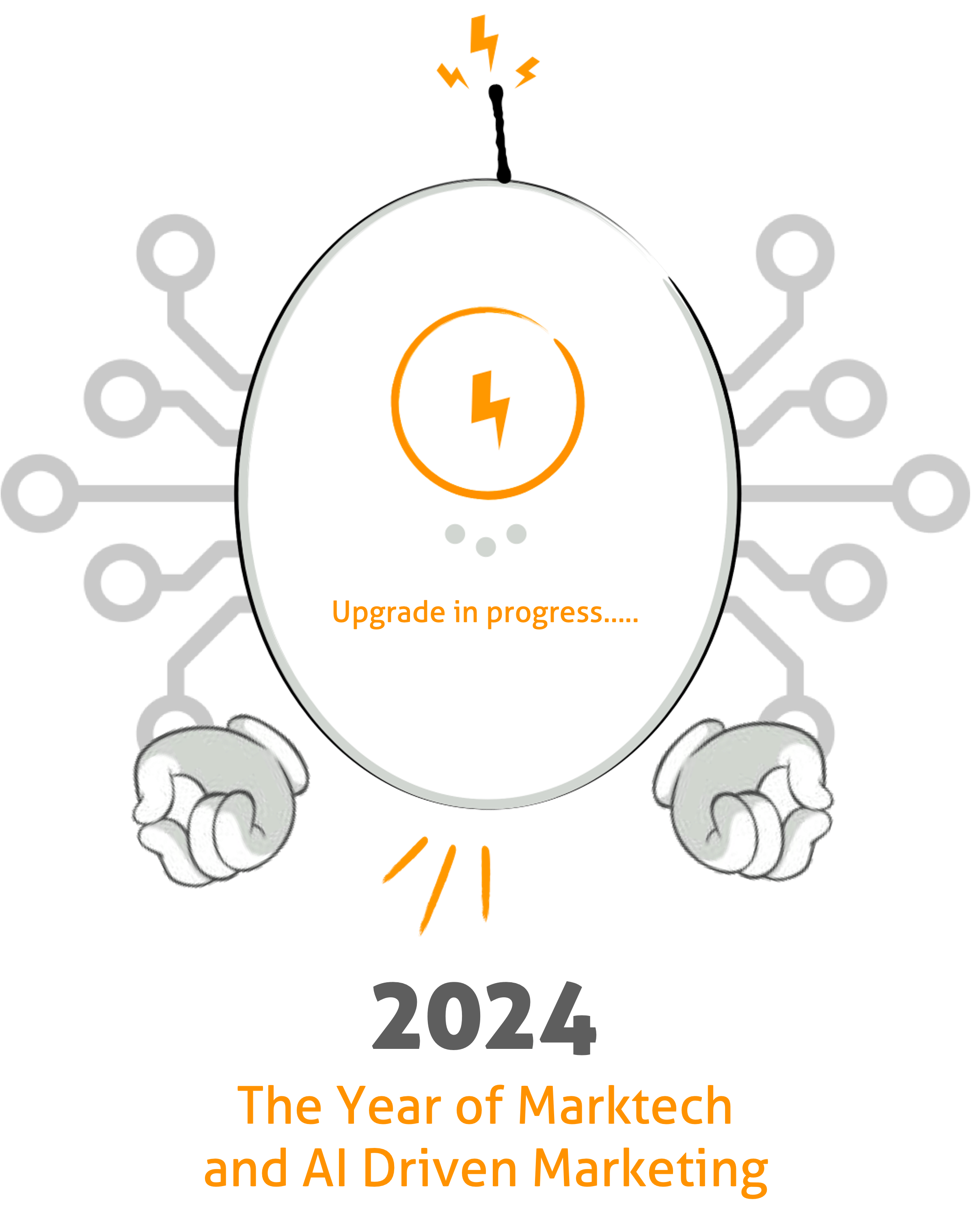
Imagine your company being 10x more profitable than what it is now! Your sales team is best at engaging with your customers and you have the best practices, research and tools to draw more business. Sounds exciting!
At the bed of Mt. Everest there is a magical herb that can help you achieve this. Yes, it’s true! When I heard of it, I was so excited, I took my backpack and set out. No preparation, just pure adrenaline. You guessed right, I didn’t succeed. In fact, I wasted so much money, time and effort that I believed I am not meant to get that. Something changed the second time and I did, however succeed in reaching there. This time I was told to do extensive research, discussed with experts, and built myself for those challenges. I also gathered all the required tools and resources needed for this expedition. Strategies were devised and short term goals were set up. All possible positives and negatives were covered. We still had a tough time but all the preparation helped a lot.
The entire journey taught me that I had already been given the herb. When did I get it and what was it? The magical herb is called ‘Enablement’ and in this case, ’Sales Enablement’. Everyone wants to generate business like setting out to venture into the Himalayas. It’s not easy and without preparation it will hurt you a lot. There is so much uncertainty that you need to be prepared before taking on this expedition. The difference between the first and second expedition was not just about investing time, money and effort. It was around investing in the right channel that shall propel you to achieve your goals.
From a sales perspective, you have resources, content, training, plans and all information but if you do focus on the magical herb everything is just data without purpose. Let us understand what Sales Enablement is and how it can help you close more deals, drive revenue and also delight customers!
What is sales enablement?
Sales enablement is the iterative process of providing your business’s sales team with the resources they need to close more deals. These resources may include content, tools, knowledge, and information to effectively sell your product or service to customers. – Hubspot
Sales enablement primarily consists of five elements:
- Content – Content that will be used by the sales team to make an impressive pitch to the buyer. This content can be images, videos, presentations, product know-how, product demos, questionnaires, successful case studies etc. that can aid customer’s understanding of the product/services offered. Content should be interactive and engaging.
- Efficient use of content – Speaking of creating meaningful content for sales enablement, it is important to keep in mind that all content is easy to understand and easy to use. An efficient sales enablement program will ensure that all content is stored centrally, easily accessible, easy to find. It will also track what resources are being used and what resources are outdated or redundant.
- Customer centric – Most importantly, good sales enablement is where the customer is the main focus. Sales enablement tools should aim at delivering what the customer wants and how it would resolve customer pain areas.
- Training – Training is important if you want to build a good culture within your organization. Aligning your sales team with your company goals, mission and values is an important step in establishing a perspective for potential customers. Sales representatives must know how to effectively utilize all resources provided to them as a part of the sales enablement process, therefore training is an important step in the process.Sales training must be an iterative process that aims towards continuous improvement.
- Measurement – You cannot determine the effectiveness of a sales enablement program unless you have a way to measure it. Some good metrics would be.
- Growth rate – month on month increase in sales
- Speed – Time taken to close a deal
- Achieving targets- How many sales individuals are able to achieve targets.
Why Sales Enablement is important for SMBs
Sales enablement is a must for start-ups because it helps in structuring, aligning your sales team. It not only promotes sales, but also promotes a coherent culture amongst your team from early stages. Let’s look at some of the key elements of sales enablement.
- Structure your sales team – A crucial step in the sales enablement process would be to identify the strong players in your team and assign them as leaders or SPOCs. This will ensure that there is effective communication between the sales team and other departments such as marketing and also correct information such as sales numbers, challenges on the field etc. is represented accurately through a single source to the executives.
- Empower your sales team – Along with an impeccable sales acumen, what your sales team needs is to show up prepared on the field. When they meet potential clients they must be well equipped with resources such as company information, product knowledge, product fitment addressing customer’s current challenges, plans for effective implementation, charts with projected improvement in customer pain areas, projected sales or process efficiencies etc. If your sales representative goes this prepared to meet prospects, almost all leads would head towards conversion. It is therefore crucial that your sales team is well equipped. The relevant equipment would be determined under the sales enablement process.
- Improve conversions; get more business – When we have successfully empowered our sales team with product knowledge and customer specific insights, plans, successful case studies etc. your sales team will be able to deliver an irresistible sales pitch that nails the key pain areas. This will result in getting your sales team ahead of the decision makers. When your sales team is already ahead of key stakeholders and decision makers, it will always have one result – conversion! And who doesn’t like that? Thus with correct and effective implementation of a good sales enablement strategy, you will have more conversions. Not only will your growth rate be accelerated, but you will build more credibility with your customers.
Who owns Sales Enablement?
Sales Enablement can get specific for every company, especially start-ups. Start-ups in their nascent stages find it difficult to bring in structure because at this stage they are still evolving. The product, company, people are in the growing and unknown phase, where a lot changes very frequently.
At such times, what takes priority is that we get the work done. Who does it, who owns it may not be of great relevance initially. Having said that, I personally feel sales enablement should be collectively managed by the sales and marketing teams.However, since the sales team is the end user of the sales enablement implementation, it is crucial that the sales team is proactively involved in owning and building sales enablement for your company.
Marketing can assist in creating content, but it is the responsibility of the sales individual to make it customer specific.This content and materials can be videos, blogs, case studies, product guides etc. that would support the sales team to deliver quality pitches to potential customers.
Sales team, on the other hand, based on their experience with customers, can share their ideas and make suggestions on how we can improve existing resources and content. This continuous evolving and improving will help keep pace with the changing market needs.
It is therefore imperative that the sales team take a proactive approach in leading and building a robust sales enablement strategy. A quick guide on building a sales enablement strategy is available here.
Why, you cannot ignore sales enablement.
Lastly, sales enablement is something where every individual of the company is involved in, directly or indirectly. No matter your business, sales is the ultimate goal and everyone is working towards driving more sales. Start-ups who understand that sales enablement is critical and are built imbibing this culture, evolve to be true leaders. Sales enablement – is the one true herb!
Share This Story, Choose Your Platform!
FAQs
Marinoid has a different grammatical meaning. We coined it from two words viz Marketing + Droids. A futuristic approach to marketing. Our mascot ‘Noidy’ is designed and inspired by the movie, WALLE and shares the same emotional quotient.
You will get a call from us within 24 hours or when you have scheduled a call. First meeting focuses on understanding your business problem and/or marketing request. We will brainstorm the need and discuss how to approach it. If you like the approach, we will discuss the commercials and kickstart the journey.
Digital Marketing is not magic. It is a science and art. Besides, there are various factors which decide ‘success’. Treat marketing as an investment centre rather than a cost centre. Understand and brainstorm as much as possible before committing to the plan.
A wise man once said – “If you throw peanuts, you will only attract monkeys!” At Marinoid, we focus on helping you achieve GTM first rather than focusing on our profits – so don’t worry we will help you regardless.
In simple terms, your website – your most critical asset. Focus most of your efforts on making this asset robust, scalable and simple. It should be your best replacement on the web and all your efforts should be circled around this asset.
Yes, there is an hourly charge for consultation. Check our pricing page or drop us a note and we will tell you the details.

Some of our Recent Posts:
Beyond Buzzwords: How SMBs Can Transform Virtual Influencers into AI-Driven Problem-Solvers
Welcome to the Future of SMB Marketing Picture this: you run a thriving SMB offering IT services or products, and your customer pipeline is growing fast. Great news! But [...]
The Future of Attraction: Inbound Marketing in 2025—A Strategic Guide for SMBs
As we get ready for 2025, the way we attract customers is evolving rapidly, driven by the fusion of advanced technology, shifting consumer expectations, and innovative inbound strategies. For [...]
How AI and Personalization are Revolutionizing Customer Engagement.
A Roadmap for SMBs in 2025 Imagine knowing each of your customers so well that you can tailor every interaction, every message, every offer just for them. It sounds like [...]
From Vision to Victory: How SMBs Can Craft and Sustain a Powerful Growth Story with Strategic Marketing
In the world of business, growth is a journey, not a destination. For small and medium-sized businesses (SMBs), crafting and nurturing a growth story is more than just expanding [...]



